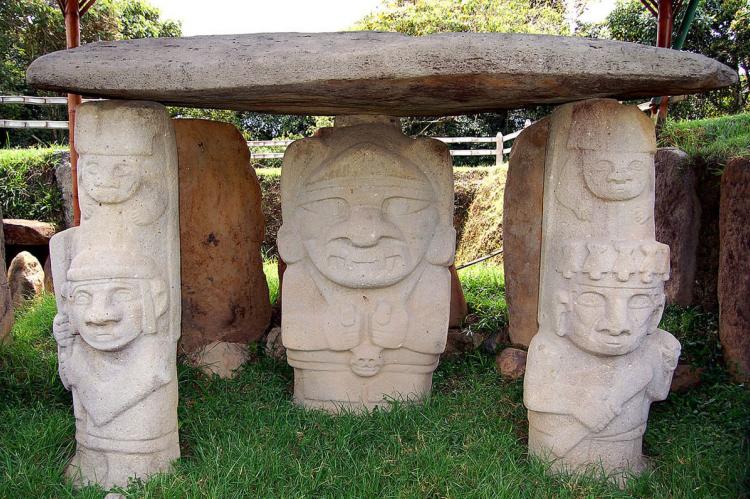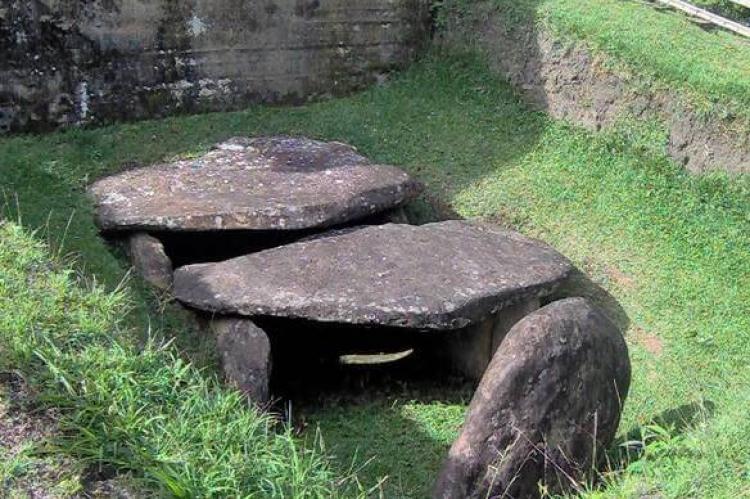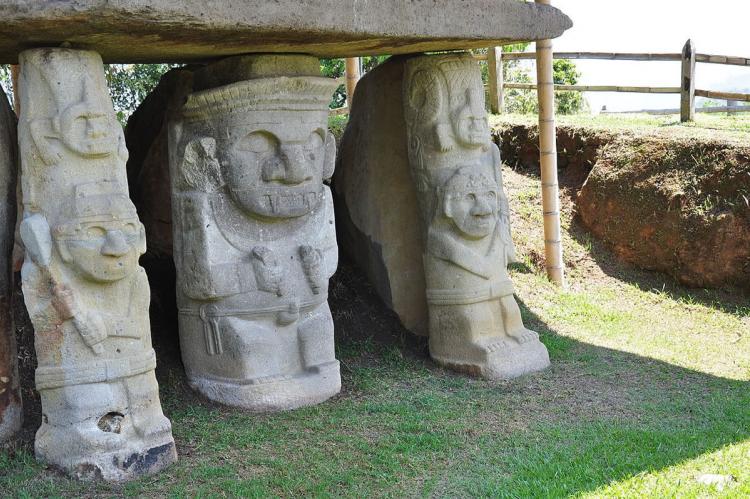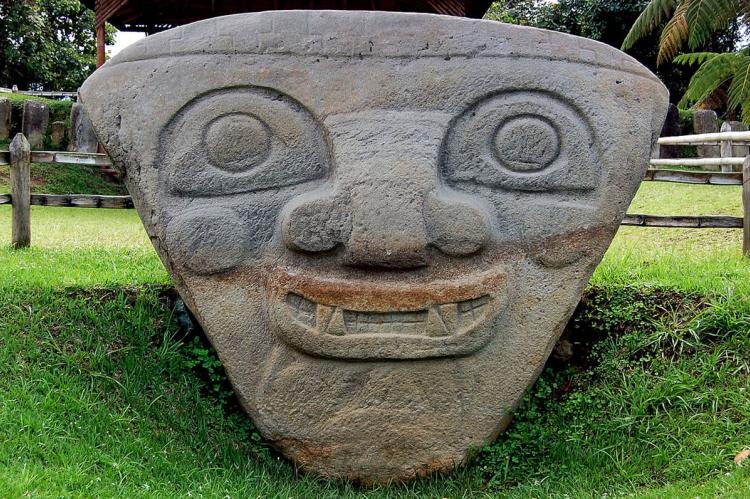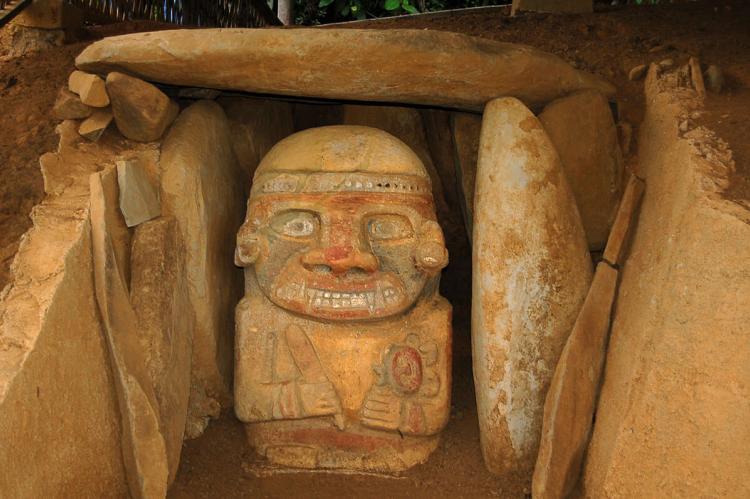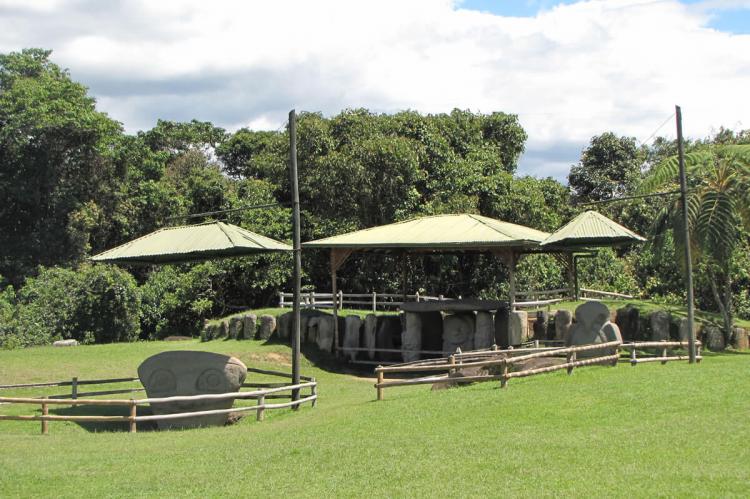San Agustín Archaeological Park: Gateway to Ancient Marvels in Colombia
Nestled near the Colombian town of San Agustín, the San Agustín Archaeological Park is home to the largest assemblage of religious monuments and megalithic sculptures in South America, nestled within a wild and spectacular landscape of the Colombian Andes.
San Agustín Archaeological Park
Gateway to Ancient Marvels in Colombia
Nestled near the town of San Agustín in the Huila Department of Colombia, the San Agustín Archaeological Park stands as a testament to the cultural and artistic prowess of a northern Andean civilization that thrived from the 1st to the 8th century. Encompassing three distinct properties—San Agustín, Alto de los Ídolos, and Alto de Las Piedras—the park spans over 116 hectares (286 acres) within the Colombian Massif of the southwestern Andes.
Diverse Religious Monuments and Megalithic Sculptures
The archaeological park is home to the largest assemblage of religious monuments and megalithic sculptures in South America, nestled within a wild and spectacular landscape. Skillfully crafted representations of gods and mythical animals showcase the creativity and imagination of the ancient Andean culture that once flourished in the region.
Core of the San Agustín Archaeological Zone
The San Agustín archaeological zone features vast pre-Columbian megalithic funerary monuments and statues. The park is home to burial mounds, terraces, funerary structures, and stone sculptures that weave a captivating tale of history together. One of the most noteworthy sites in the park is the Fuente de Lavapatas, a religious monument meticulously carved into the stone bed of a stream.
Ceremonial Sites and Burial Mounds
Ceremonial sites within the park are strategically positioned at the center of settlement concentrations. These sites feature large burial mounds interconnected by terraces, paths, and earthen causeways. The earthen mounds, some reaching diameters of 30 meters (98 feet), were constructed during the Regional Classic period (1-900 AD) and covered stone tombs belonging to elite individuals of well-documented chiefdom societies.
Elaborate Funerary Architecture
The tombs within these mounds reveal elaborate funerary architecture featuring stone corridors, columns, sarcophagi, and impressive statues depicting gods or supernatural beings. These statues signify the profound connection between deceased ancestors and supernatural forces, marking the institutionalization of power within the region.
Monuments Across the Municipality
The municipality of San Agustín boasts several key archaeological monuments. Las Mesitas, featuring artificial mounds, terraces, and stone carvings; Fuente de Lavapatas, a religious monument; and Bosque de Las Estatuas, showcasing stone statues from the entire region, contribute to the rich cultural landscape.
Alto de Los Ídolos and Alto de Las Piedras
Situated on the right bank of the Magdalena River, Alto de Los Ídolos and the smaller Alto de Las Piedras in the municipality of San José de Isnos complement the main San Agustín area. These sites are abundant in diverse monuments, ranging from hieratic guards to monolithic sarcophagi and burial sites.
Sacred Land and Pilgrimage Site
The broader area surrounding the archaeological park reveals an intricate landscape, including ancient tracks, field boundaries, drainage ditches, and artificial platforms. This sacred land served as a pilgrimage site and a place of ancestor worship, further emphasizing the spiritual significance of the region.
Guardians of the Past
The colossal hieratic guards, towering over 4 meters (13 feet) in height and weighing several tons, are intricately carved from blocks of tuff and volcanic rock. Serving as protectors of funeral rooms, monolithic sarcophagi, and burial sites, these monuments embody ancient civilization's cultural and spiritual guardianship.
Scientific and Aesthetic Importance
The monuments of San Agustín are strategically located at the political and demographic centers of chiefdom societies. This placement allowed for the consolidation of power through complex ceremonial activities and the production of knowledge. The San Agustín chiefdoms, alongside their remarkable statuary, represent an exceptional trajectory of political centralization within a rugged environment devoid of concentrated economic wealth. Their significance, both scientifically and aesthetically, makes them invaluable in unraveling the mysteries of ancient civilizations.
Conclusion
The San Agustín Archaeological Park invites visitors to explore Colombia's ancient religious monuments, megalithic sculptures, and elaborate burial sites. Beyond its archaeological importance, the park symbolizes the enduring connection between humanity and spirituality in a landscape where history, culture, and nature intertwine.
